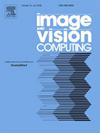用于遥感目标检测的多尺度金字塔卷积变压器
IF 4.2
3区 计算机科学
Q2 COMPUTER SCIENCE, ARTIFICIAL INTELLIGENCE
引用次数: 0
摘要
在地面监测中,可靠的遥感图像目标检测是一项重要而富有挑战性的任务。然而,rsi通常是从高空自上而下的视角获得的,这导致了复杂的背景、纵横比、颜色和尺度变化等内在属性。这些特性限制了复杂检测器在自然图像上的域转移到rsi,从而降低了期望的检测性能。为了解决这个问题,我们提出了一种多尺度金字塔卷积变压器(mpcvt),减轻了普通视觉变压器的局限性。具体而言,我们首先使用改进的CNN提取图像特征,生成初始特征金字塔。然后,进一步采用双向特征聚合策略,通过特征增强和聚合步骤提高特征表示能力。为了促进全局依赖和局部细节的深度交互,在每个Transformer编码器中构建了双路由编码机制。在推理阶段,设计了迭代稀疏关键点采样头来提高检测精度。在NWPU VHR-10和DIOR上的竞争性实验结果验证了所提出的MPCViT的有效性。本文章由计算机程序翻译,如有差异,请以英文原文为准。
Multi-scale pyramid convolution transformer for remote-sensing object detection
Reliable object detection in remote sensing imageries (RSIs) is an essential and challenging task in surface monitoring. However, RSIs are normally obtained from a high-altitude top-down perspective, causing intrinsic properties such as complex background, aspect ratio, color and scale variations. These properties restrict the domain transfer of sophisticated detector on nature images to RSIs, thereby deteriorating the desired detection performance. To address this issue, we propose a multi-scale pyramid convolution Transformer (MPCViT) that alleviates the limitations of ordinary visual Transformer. Specifically, we firstly employ an improved CNN to extract image features, generating initial feature pyramid. Then, bidirectional feature aggregation strategy is further used to improve feature representation capacity through feature enhancement and aggregation steps. To facilitate deep interaction of global dependencies and local details, dual-route encoding mechanism is constructed in each Transformer encoder. During inference stage, an iterative sparse keypoint sampling head is devised to enhance the detection accuracy. The competitive experimental results on NWPU VHR-10 and DIOR verify the efficacy of the proposed MPCViT.
求助全文
通过发布文献求助,成功后即可免费获取论文全文。
去求助
来源期刊

Image and Vision Computing
工程技术-工程:电子与电气
CiteScore
8.50
自引率
8.50%
发文量
143
审稿时长
7.8 months
期刊介绍:
Image and Vision Computing has as a primary aim the provision of an effective medium of interchange for the results of high quality theoretical and applied research fundamental to all aspects of image interpretation and computer vision. The journal publishes work that proposes new image interpretation and computer vision methodology or addresses the application of such methods to real world scenes. It seeks to strengthen a deeper understanding in the discipline by encouraging the quantitative comparison and performance evaluation of the proposed methodology. The coverage includes: image interpretation, scene modelling, object recognition and tracking, shape analysis, monitoring and surveillance, active vision and robotic systems, SLAM, biologically-inspired computer vision, motion analysis, stereo vision, document image understanding, character and handwritten text recognition, face and gesture recognition, biometrics, vision-based human-computer interaction, human activity and behavior understanding, data fusion from multiple sensor inputs, image databases.
 求助内容:
求助内容: 应助结果提醒方式:
应助结果提醒方式:


